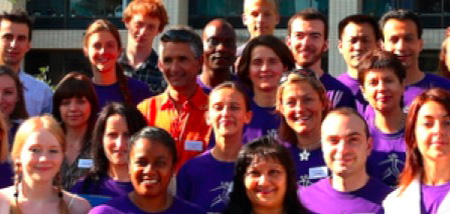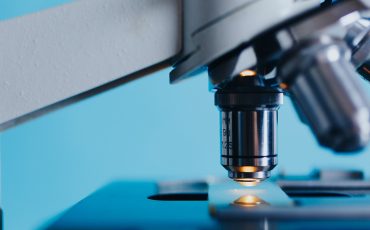Researchers at King’s College London’s Twin Research Unit have discovered new ways of measuring metabolites in the blood which could be used to diagnose osteoarthritis earlier.
Their new biochemical test called metabolomics allows the scientists to test for 163 chemical signals at the same time from a single blood sample. These chemical signals are indicators of the metabolism of human cells and their 26,000 metabolite ratios represent the chemical reactions going on in the human body.
The team first studied 123 women with osteoarthritis of the knee and 299 healthy women from the Twins UK register, comparing the difference in the metabolites and the 26,000 metabolite ratios between the two groups. They found that 14 metabolite ratios were significantly associated with osteoarthritis. The team then tested these signals to see if they were replicated in an independent sample consisting of 76 women with knee arthritis and 100 healthy women. Two ratios were successfully confirmed in the replication sample.
Search for biomarkers
Dr Guangju Zhai, lead author on the paper published in the journal, Annals of Rheumatic Diseases, said: ‘Osteoarthritis affects an estimated 8.5 million people in the UK and one of its main characteristics is damage to cartilage, the strong smooth muscle that lines the bones and allows joints to move easily and without friction. The search for biomarkers, or traits, which can be used to measure or indicate the effects or progress of a condition is a hugely exciting area of clinical research. The two novel metabolic biomarkers found through our study could indicate increased cartilage breakdown and we now want to study these mechanisms in more detail.’
Professor Tim Spector, senior author of the paper added: ‘Ours is the first study using a metabolomics approach to identify novel metabolic biomarkers for osteoarthritis. We hope that further research will lead to these two metabolite ratios being adopted into clinical practice, enabling doctors to diagnose the condition, or identify that osteoarthritis is developing earlier. Our study also shows the enormous clinical potential of metabolomics, and we hope in future that they could be used to monitor the effectiveness of treatments. At the moment we relay on x-rays and scans – and our dependence on these methods is a major obstacle to the development of new drugs for osteoarthritis.’
Research studies such as this underpin King’s Health Partners Academic Health Sciences Centre, a pioneering collaboration between King’s College London, and Guy’s and St Thomas’, King’s College Hospital and South London and Maudsley NHS Foundation Trusts which aims to deliver medical breakthroughs to patients at the earliest opportunity.
The study was funded by the European Community Framework 7 large collaborative project grant Treat-OA, The Wellcome Trust, and Arthritis Research Campaign. It also received support from the NIHR comprehensive Biomedical Research Centre at Guy’s and St Thomas’ NHS Foundation Trust and King’s College London.
Notes to editors
King’s College London
King’s College London is one of the top 25 universities in the world (Times Higher Education 2009) and the fourth oldest in England. A research-led university based in the heart of London, King’s has nearly 23,000 students (of whom more than 8,600 are graduate students) from nearly 140 countries, and some 5,500 employees. King’s is in the second phase of a £1 billion redevelopment programme which is transforming its estate.
King’s has an outstanding reputation for providing world-class teaching and cutting-edge research. In the 2008 Research Assessment Exercise for British universities, 23 departments were ranked in the top quartile of British universities; over half of our academic staff work in departments that are in the top 10 per cent in the UK in their field and can thus be classed as world leading. The College is in the top seven UK universities for research earnings and has an overall annual income of nearly £450 million.
King’s has a particularly distinguished reputation in the humanities, law, the sciences (including a wide range of health areas such as psychiatry, medicine and dentistry) and social sciences including international affairs. It has played a major role in many of the advances that have shaped modern life, such as the discovery of the structure of DNA and research that led to the development of radio, television, mobile phones and radar. It is the largest centre for the education of healthcare professionals in Europe; no university has more Medical Research Council Centres.
King’s College London and Guy’s and St Thomas’, King’s College Hospital and South London and Maudsley NHS Foundation Trusts are part of King’s Health Partners. King’s Health Partners Academic Health Sciences Centre (AHSC) is a pioneering global collaboration between one of the world’s leading research-led universities and three of London’s most successful NHS Foundation Trusts, including leading teaching hospitals and comprehensive mental health services. For more information, visit:www.kingshealthpartners.org.






